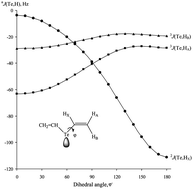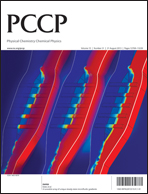This paper documents the very first example of a high-level correlated calculation of spin–spin coupling constants involving tellurium taking into account relativistic effects, vibrational corrections and solvent effects for medium sized organotellurium molecules. The 125Te–1H spin–spin coupling constants of tellurophene and divinyl telluride were calculated at the SOPPA and DFT levels, in good agreement with experimental data. A new full-electron basis set, av3z-J, for tellurium derived from the “relativistic” Dyall's basis set, dyall.av3z, and specifically optimized for the correlated calculations of spin–spin coupling constants involving tellurium was developed. The SOPPA method shows a much better performance compared to DFT, if relativistic effects calculated within the ZORA scheme are taken into account. Vibrational and solvent corrections are next to negligible, while conformational averaging is of prime importance in the calculation of 125Te–1H spin–spin couplings. Based on the performed calculations at the SOPPA(CCSD) level, a marked stereospecificity of geminal and vicinal 125Te–1H spin–spin coupling constants originating in the orientational lone pair effect of tellurium has been established, which opens a new guideline in organotellurium stereochemistry.

This article is Open Access
 Please wait while we load your content...
Something went wrong. Try again?
Please wait while we load your content...
Something went wrong. Try again?


 Please wait while we load your content...
Please wait while we load your content...